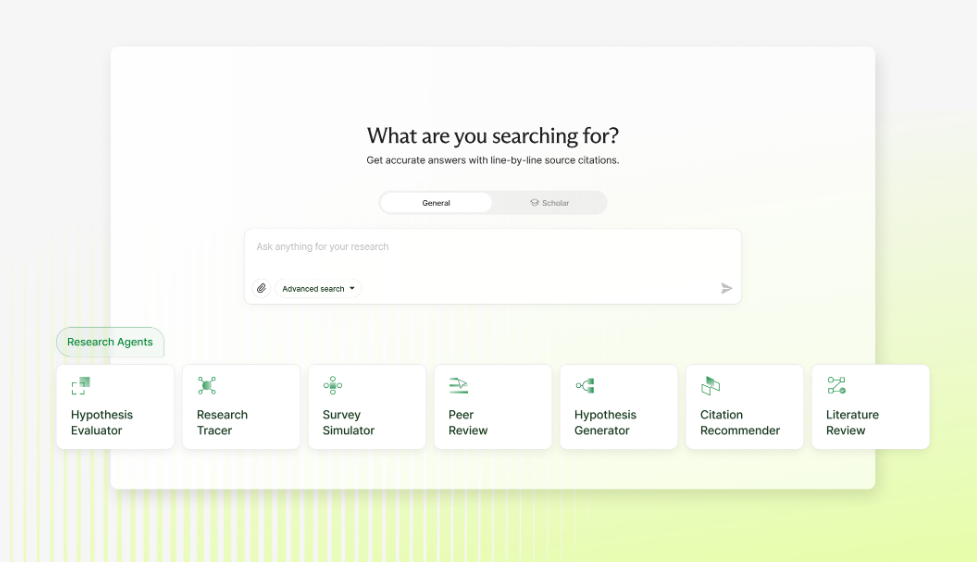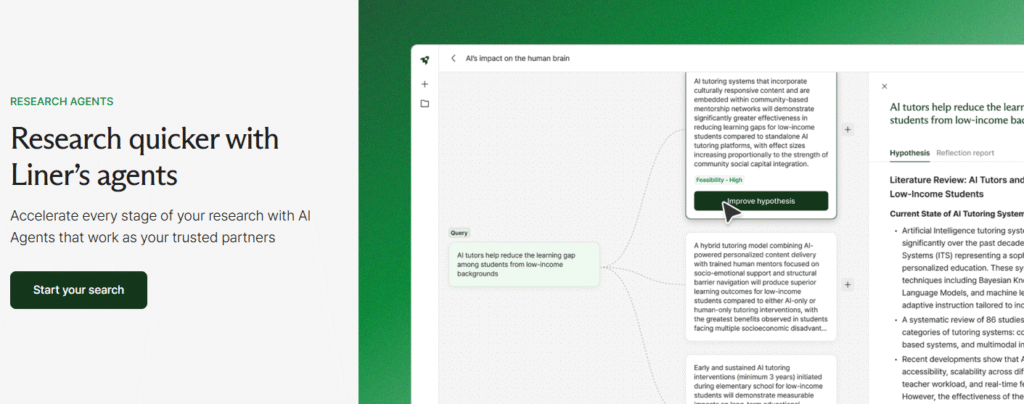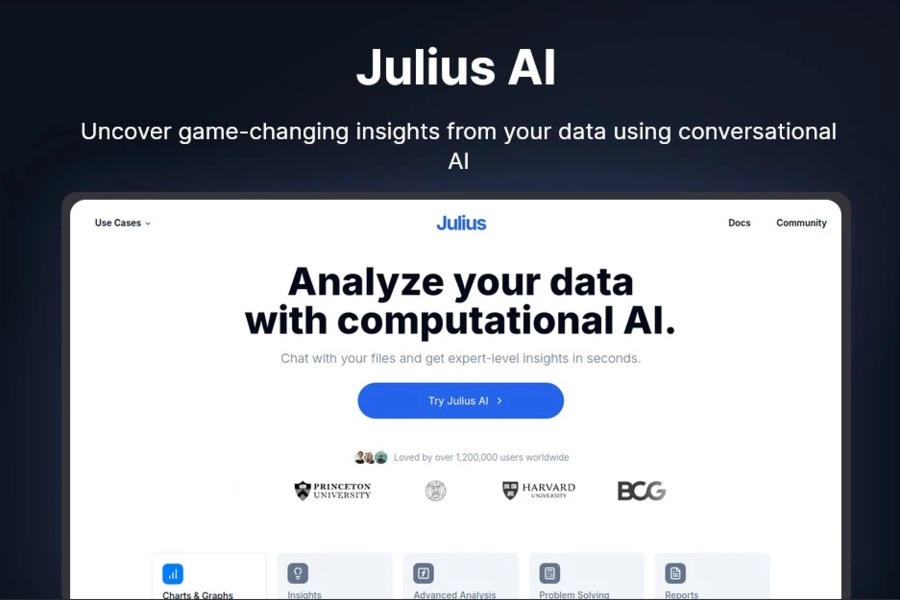We’ve all been there—drowning in browser tabs, desperately searching for that perfect piece of information that always seems to slip through our fingers.
If this frustrating digital scavenger hunt sounds familiar, you’re definitely not alone. This universal struggle is exactly why tools like Liner AI have captured the attention of researchers, students, and professionals everywhere.
In this comprehensive Liner AI review, we’ll explore whether this platform truly delivers on its promise to transform chaotic browsing into organized brilliance, or if it’s just another shiny gadget in the overcrowded AI landscape.
What Is Liner AI

Imagine having a brilliant research assistant living right in your browser, ready to help you make sense of the overwhelming flood of online information. That’s essentially what Liner AI brings to the table. This sophisticated browser extension reimagines how we interact with digital content, going far beyond simple note-taking to become an intelligent discovery engine.
The magic happens through its three-part approach: highlighting and annotating anything on the web, organizing your findings in a smart dashboard, and—this is where it gets really exciting—using AI to generate context-aware insights and summaries. Whether you’re a student pulling an all-nighter, a journalist racing against a deadline, or an analyst connecting disparate data points, Liner AI proposes a compelling idea: what if your research tool could actually think alongside you?
What makes this particularly appealing is how it shifts from passive collection to active synthesis. The platform doesn’t just save your highlights; it contextualizes them, draws connections, and serves up summaries that feel like they were crafted by a diligent research partner who actually understands your needs.
Key Features of Liner AI
The AI Model Playground
While most AI tools lock you into a single way of thinking, Liner AI gives you access to an entire playground of artificial intelligence models. The platform integrates up to eight advanced AI models from industry leaders like OpenAI and Google, and this isn’t just about having choices for the sake of it—it’s about strategic advantage.
Need creative synthesis for a literature review? GPT-4 might be your best bet. Working with scientific papers? Google’s specialized models could serve you better. This flexibility transforms how serious researchers approach their work. Instead of accepting one model’s limitations, you can test different AIs for the same task, comparing outputs and selecting the most authoritative voice for your specific needs. It’s like having a team of expert research assistants, each with their own specialty, all working under your direction.
Custom AI Agents

Beyond the pre-built models, Liner AI lets you create custom AI agents tailored to your specific research style and requirements. This feature is an absolute game-changer for specialists across different fields. A legal researcher can build an agent trained to recognize the nuances of case law, while a marketing analyst might create one that excels at parsing competitive intelligence.
The customization goes much deeper than simple prompts—you’re essentially fine-tuning the AI’s personality, knowledge priorities, and output style to match your unique workflow. The result feels less like querying a machine and more like collaborating with a domain expert who’s learned your preferences and working style over time.
Handling Diverse Content Types
Modern research isn’t limited to web pages, and Liner AI recognizes this reality with robust support for PDFs, Word documents, images, and even complex visual data. Upload a chart-heavy research paper, and the AI can parse both text and visual elements. Snap a photo of a whiteboard brainstorming session, and Liner will extract and organize those ideas alongside your digital research.
This multimodal capability is crucial for today’s researchers who need to synthesize conference presentations, scanned archival materials, and digital-native content into a coherent knowledge base. The translation features across these formats further break down language barriers, making foreign-language sources accessible without ever leaving your workflow.
Seamless Cross-Device Experience
Research doesn’t happen only at your desk anymore—it happens on your phone during commutes, on tablets during conferences, and on laptops in coffee shops. Liner AI’s seamless synchronization ensures your highlights, notes, and AI insights follow you like a faithful digital companion throughout your day.
This isn’t just basic cloud storage—it’s contextual continuity. The platform remembers where you left off, what themes you’ve been exploring, and can even suggest connections between something you highlighted yesterday and what you’re reading today. It’s this thoughtful attention to the research journey that makes the tool feel genuinely intelligent rather than just mechanically efficient.
Expert Mode: For Serious Research
Activating Expert Mode feels like switching from a friendly tour guide to a seasoned professor who knows their subject inside and out. The AI stops giving general answers and instead delivers comprehensive, nuanced responses backed by specific citations and logical reasoning chains.
For peer-reviewed research depth or technical documentation mastery, this mode provides the intellectual rigor that superficial summarizers lack. The answers aren’t just longer—they’re structurally different, offering counterarguments, methodological critiques, and contextual limitations that serious researchers need to produce quality work.
Liner AI Review: The Honest Pros & Cons
Pros
- Research efficiency that feels almost unfair: Tasks that once required hours of manual work can now be completed in minutes, cutting literature review time by half or more for serious researchers
- Democratized access to premium AI: Multiple advanced models under one subscription eliminate the need for separate expensive accounts
- Impressive versatility across use cases: Adapts seamlessly from academic research to competitive intelligence without feeling like a compromised solution
- Meaningful collaboration features: Enables shared annotated articles and team knowledge bases that build collective intelligence
Cons
- The freemium ceiling: Truly powerful features remain locked behind premium tiers, making the basic plan feel like an extended trial
- Subscription fatigue concerns: Requires justification for users already managing multiple AI tool subscriptions
- A genuine learning curve: Mastering custom agents and model selection demands significant time investment
- Potential over-reliance risk: Excellent summarization capabilities might tempt users to skip reading source material entirely
Who Is Using Liner AI
The diverse user base tells its own success story. With millions of users worldwide, Liner AI has achieved the rare feat of crossing academic and professional boundaries while maintaining credibility across different fields.
The Academic Power Users
Students and academics form the heart of Liner’s user community. Undergraduates use it to manage overwhelming reading assignments, while PhD candidates leverage Expert Mode for literature reviews that would otherwise consume months of their time. The platform’s ability to surface peer-reviewed sources and format citations makes it invaluable for thesis writing and academic research.
Professional Researchers and Journalists
In our current era of misinformation, fact-checkers and reporters increasingly rely on Liner AI to verify claims against primary sources quickly. The annotation trail creates a defensible audit path for editorial reviews, while business analysts use it to track industry trends across hundreds of sources, allowing the AI to identify emerging patterns they might otherwise miss.
Marketing and Intelligence Teams
Marketing and competitive intelligence teams have discovered Liner’s powerful capabilities for monitoring competitor websites, analyzing market reports, and synthesizing customer feedback from disparate forums. The collaborative features mean insights get shared across team channels and dashboards in real-time, replacing gut-feel strategy with evidence-backed intelligence.
The AI Enthusiast Community
Beyond these professional segments, a growing community of tech enthusiasts uses Liner AI as their primary interface to multiple language models. They appreciate the model-switching flexibility and the ability to create agents for niche interests—everything from tracking cryptocurrency whitepapers to analyzing specialized forum discussions.
Final Verdict on Liner AI Review
After thoroughly examining every feature and considering both strengths and limitations, where does Liner AI stand? While not perfect, it occupies a genuinely valuable niche in the AI tool ecosystem. It succeeds most brilliantly as a research orchestration layer—a conductor that coordinates multiple AI models, your personal knowledge base, and collaborative needs into a coherent workflow.
For serious researchers and professionals, the subscription cost is easily justified by the time saved and insights gained. The platform’s ability to transform chaotic information gathering into structured knowledge building represents a significant step forward in how we interact with digital content. For casual users, the free tier offers enough value to warrant exploration, though you’ll likely encounter its limitations if research is central to your work.



